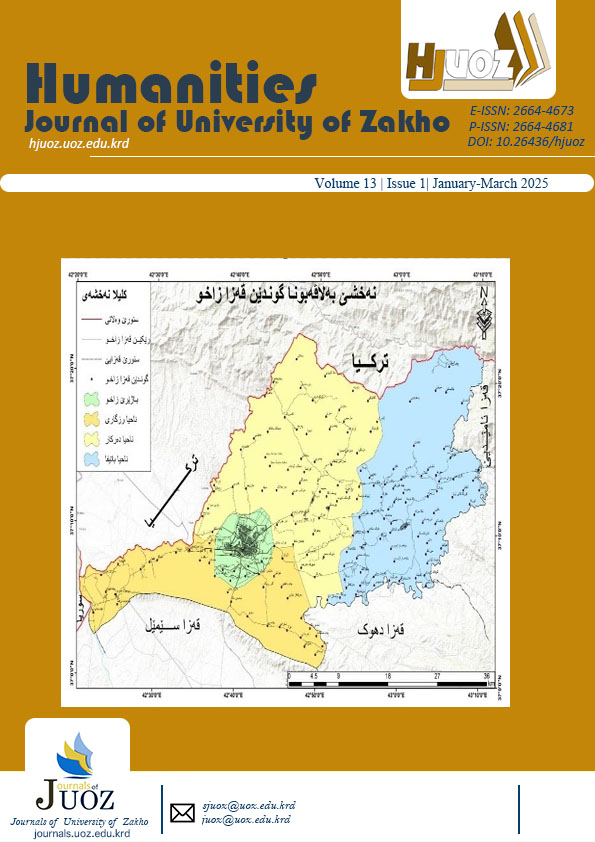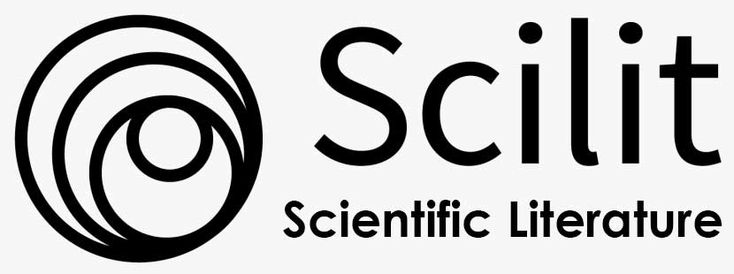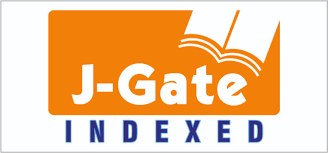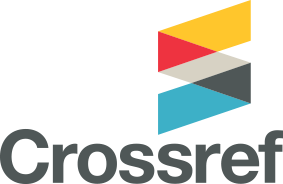ڤەکۆلینەک ل سەر بۆچوونێن خوێندکارێن کورد یێن کۆ زمانێ ئینگلیزی وەک زمانەکێ بیانی دخوینن، دەربارەی سیستەمێ هەلسەنگاندنێ د ئاستێ زانینگەهێ دا
DOI:
https://doi.org/10.26436/hjuoz.2025.13.1.1538الكلمات المفتاحية:
بۆچوونێن خوێندکاران، چێکرنا پسیاران، بڕێڤەبرنا تاقیکرنان، زمانێ ئینگلیزی وەک زمانەکێ بیانی، فیدباک، کوالیتیا پسیارانالملخص
ئارمانج ژ ئەڤێ ڤەکۆلینێ؛ ڤەکۆلینه ل سەر بۆچوونێن خوێندکارێن کورد، ئەوێن فێری زمانێ ئینگلیزی دبن وەک زمانەکێ بیانی ل دامودەزگەهێن خواندنا بلند و گشتی ل هەرێما کوردستانا عێراقێ. سیستەمێ هەلسەنگاندنێ ئێکە ژ بنگەهێن سەرەکی د فێربوون و پێشڤەچوونا خوێندکاران دا، هەروەسا کاریگەریەکا مەزن یا هەی د پشکداریکرنا وان د پرۆسێسا فێربوونێ دا، پێدڤییە گرنگیەکا تایبەت پێ بهێتەدان. ئارمانجا سەرەکییا ڤێ ڤەکۆلینێ ئەوە ڤەکۆلینێ ل سەر بۆچوونێن خوێندکارێن کورد ل سەر (چێکرن، برێڤەبرن، مەرەم، کوالیتی، کاریگەری) هەروەسا شێوازێ نرخاندنا بەرسڤێن خوێندکاران د سیستەمێ هەلسەنگاندنا وان دا. بۆ ڤێ مەرەمێ پرسنامەیەکا تایبەت بۆ کومکرنا پێزانینان دەربارەی بۆچوونێن خوێندکاران هاتیە ئامادەکرن و بڕێکا لینکێ گۆگل فۆرم، بۆ خوێندکارێن پشکێن زمانێ ئینگلیزی یێن سێمستەرێن (3,5,7) بۆ سالا خواندنێ (2024-2025) ل هژمارەک ژ زانکۆیێن حکومی هاتیە هنارتن. بۆ شرۆڤەکرنا باوەریا خالێن ڕاپرسیێ (کرونباخ الفا Cronbach Alpha ) هاتیە بکارئینان و بۆ شرۆڤەکرنا تێکرایا ژمێریاری پرۆگرامێ SPSSگۆهاڕتویا 25 هاتیە بکارئینان. هەروەسا بۆ دیتنا جوداهیا تێکرایا ژمێریاری دناڤبەرا هەر شەش تێگوهەران دا. مە پرۆگرامێ ANOVA بکارئینایە. ئەنجامێن ڤەکۆلینێ وەسا دیارکرن: کۆ گەلەک ئاستەنک یێن هەین د پرۆسێسا بجهئینانا سیستەمێ هەلسەنکاندنێ ب شێوازەکێ دروست ل دامودەزگەهێن خواندنا بلند. ژ لایەکێ دیڤە ل دەمێ کۆ کەرستەیێن هەلسەنگاندنێ لگەل ئارمانجێن پەروەردەێ د هەماهەنگن، بەلێ گەلەک جاران ئەڤ کەرستە و شێوازێ دروستکرنا وان ژلایێ مامۆستایان ڤە ب دروستی هزرا بەرفرەھ و ڕەخنەیی ناهێنە پیڤان. ژلایێ پرۆسێسێن کارگێری و نەچارکرنا نەدیار یان قەدەغەیان و سەرڕاستکرن و نرخاندنا نەدروست و نە یەکسان لگەل سەرنجڕاکێشیا زێدە ل سەر تاقیکرنێن نڤیسکی ل جهێ کۆ پێشکەفتن و تێکەلبوونا خوێندکاران زێدە بکەت، کارتێکرنا نرخاندنێ بلەزتر دکەت. فاکتەرێن ژینگەها ئەزموونان وەک دینامیکێن ژوورێن خواندنێ نە د گونجایی نە، کوالیتیا کورسیکێن خوێندکاران یێن نەباش کارتێکرنەکا نەرێنی ل سەر شێواز و کوالتیا بەرسڤدانا وان دکەت. هەروەسا کێمبوونا فیدباکەکا ئاڤاکەر کارتێکرنەک نەرێنی ل سەر ئەنجامێن زانستیێن وان دکەت.
التنزيلات
المراجع
Al-Wadi, H. (2020). Bahrain’s secondary EFL teachers’ beliefs of English language national examination: ‘How it made teaching different?’. International Journal of Instruction, 13(1), 197–214. https://doi.org/10.29333/iji.2020.13113a
Alderson, J. C., & Wall, D. (1993). Does washback exist? Applied Linguistics, 14(2), 115–129.
Aslam, R., & Khan, N. (2020). Constructive feedback and students’ academic achievement: A theoretical framework. New Horizons, 14(2), 175–198. https://doi.org/10.2.9270/NH.14.2(20).10
Bachman, L. F., & Palmer, A. (1996). Language testing in practice. Oxford: Oxford University Press.
Bachman, L. F. and Palmer, A. S. (2010). Language Assessment in Practice, 2nd edn. Oxford: Oxford University Press.
Bachman, L., & Damböck, B. (2018). Language assessment for classroom teachers. Oxford University Press.
Babbie, E. (2021). The practice of social research (16th ed.). Wadsworth Publishing.
Basera, C. H. (2019). Learners’ perceptions of assessment strategies in higher education. Journal of Education and e-Learning Research, 6(2), 76–81. https://doi.org/10.20448/journal.509.2019.62.76.81
Benediktsson, A. I., & Ragnarsdóttir, H. (2020). Immigrant students’ experiences of assessment methods used in Icelandic universities. Multicultural Education Review, 12(2), 98–116. https://doi.org/10. 1080/2005615X.2020.1756090
Bennett, R. E. (2011). Formative assessment: A critical review. Assessment in Education: Principles, Policy & Practice, 18(A), 5-25.
Biggs, J., & Tang, C. (2011). Teaching for quality learning at university: What the student does (4th ed.). Open University Press.
Black, P. J. (1993). Formative and summative assessment by teachers. Studies in Science Education, 21(1), 49-97.
Black, P., & Wiliam, D. (1998). "Assessment and classroom learning." Assessment in Education: Principles, Policy & Practice, 5(1), 7-74.
Black, P., & Wiliam, D. (2009). Developing the theory of formative assessment. Educational Assessment, Evaluation and Accountability, 21(1), 5-31.
Black, P., & Wiliam, D. (2018). Classroom assessment and pedagogy. Assessment in Education: Principles, Policy & Practice, 25, 551-575. https://doi.org/10.1080/0969594X.2018.1441807
Boud, D., & Falchikov, N. (2006). Aligning assessment with long-term learning. Assessment and Evaluation in Higher Education, 31(4), 399–4
Brace, I. (2008). Questionnaire Design: How To Plan, Structure And Write Survey Material for Effective Market Research. Kogan Page.
Broadfoot, P. (2007). An introduction to assessment. Continuum International Publishing Group.
Brookhart, S. M. (2008). How to provide effective feedback to students. ASCD, 1-12.
Brookhart, S. M. (2013). Grading and learning: Practices that support student achievement. ASCD.
Brookhart, S. M. (2017). How to use grading to improve learning. ASCD.
Brookhart, S. M., & Nitko, A. J. (2019). Educational assessment of students (8th ed.). Pearson.
Brown, D., & Abeywickrama, P. (2019). Language assessment: Principles and classroom practices (3rd ed.). Pearson Longman, New York.
Brown, G. T. L., & Harris, L. R. (2016). The future of assessment research as a human and social endeavour. In G. T. L. Brown & L. R. Harris (Eds.), Handbook of Human and Social Factors in Assessment (pp. 506–523). Routledge.
Brown, H. D., & Abeywickrama, P. (2019). Language assessment: Principles and classroom practices. Pearson.
Butler, Y. G. (2021). “Assessing young learners,” in The Routledge Handbook of Language Testing. 2nd Edn. eds. G. Fulcher and L. Harding (New York: Routledge), 153–170.
Carless, D. (2015). Excellence in university assessment: Learning from award-winning practice. Routledge.
Cheng, L. (2005). Changing language teaching through language testing: A washback study. Cambridge University Press.
Cheng, L. (2017). Washback in language testing: Research contexts and methods. Language Testing, 34(4), 473–481. https://doi.org/10.1177/0265532217710658
Cheng, L., & Green, D. W. (2007). The washback effect of EFL standardized tests in China: A case study. Language Testing, 24(3), 321–346.
Cheryan, S., Ziegler, S. A., Plaut, V. C., & Meltzoff, A. N. (2014). Designing classrooms to maximize student achievement. Policy Insights from the Behavioral and Brain Sciences, 1(1), 4-12. https://doi.org/10.1177/2372732214548677
Cooper, D. R., & Schindler, P. S. (2014). Business research methods (12th ed.). McGraw-Hill Education.
Crossley, M. (2022). Merlin Crossley makes the case for exams. Camups Morning Mail. https://campusmorningmail.com.au/news/merlin-crossley-makes-the-case-for-exams/ . Accessed November 29th, 2024
Dabiri, A. (2018). A critical discourse analysis on teachers’ verbal feedback patterns in EFL CLT classrooms. Journal of English Educators Society, 3(2), 129. https://doi.org/10.21070/jees.v3i2.1262
Dixson, D. D., & Worrell, F. C. (2016). Formative and summative assessment in the classroom. Theory Into Practice, 55(2), 153–159.
Dörnyei, Z. (2007). Research methods in applied linguistics. Oxford University Press.
Fitriyah, I., Bastomi, Y., Khotimah, K. & Gozali, I. (2022). Implementation of Assessment for Learning in Online EFL Writing Class: A Case of Novice Undergraduate Teachers. LEARN Journal: Language Education and Acquisition Research Network, 15(2), 129-159.
French, S., Dickerson, A., & Mulder, R. A. (2024). A review of the benefits and drawbacks of high-stakes final examinations in higher education. Higher Education, 88(6), 893–918. https://doi.org/10.1007/s10734-023-01148-z
Frey, B. B., & Schmitt, V. L. (2007). Coming to terms with classroom assessment. Journal of Advanced Academics, 18, 402–423.
Fulcher, G. (2010). Practical Language Testing. Hodder Education/Routledge. https://doi.org/10.4324/980203767399
Fulcher, G. (2013). Scoring performance tests. In G. Fulcher & F. Davidson (Eds.), The Routledge handbook of language testing (pp. 392–406). Routledge. https://doi.org/10.4324/9780203181287
Fulcher, G. (2019). Cultivating language assessment literacy as collaborative CPD. In M. Gillway (Ed.), Addressing the State of the Union: Working Together, Learning Together (pp. 27–35). Garnet.
Fulcher, G., & Davidson, F. (2007). Language testing and assessment: An advanced resource book. Routledge.
Gijbels, D., & Dochy, F. (2006). Students’ assessment preferences and approaches to learning: Can formative assessment make a diference? Educational Studies, 32(4), 399–409. https://doi.org/10.1080/03055690600850354
Grabin, L. A. (2009). Alternative assessment in the teaching of English as a foreign language in Israel (Unpublished doctoral dissertation). Pretoria, Gauteng, South Africa.
Guskey, T. R., & Brookhart, S. M. (2019). What We Know About Grading: What Works, What Doesn’t, and What’s Next. ASCD.
Harlen, W. (2021). Assessment and learning: State of the art. SAGE Publications.
Hattie, J., & Clarke, S. (2019). Visible learning: Feedback. Routledge.
Hattie, J., & Timperley, H. (2007). The power of feedback. Review of Educational Research, 77(1), 81–112.
Henderson, M., Ajjawi, R., Boud, D., & Molloy, E. (Eds.). (2020). The impact of feedback in higher education: Improving assessment outcomes for learners. Palgrave Macmillan.
Hughes, A. (2003). Testing for language teachers (2nd ed.). Cambridge University Press.
Hultgren, A. K., N. Owen, P. Shrestha, M. Kuteeva and Š. Mežek. 2022. Assessment and English as a medium of instruction: Challenges and opportunities. Journal of English-Medium Instruction 1(1): 105 – 123. DOI: https://doi.org/10.1075/jemi.21019.hul
Jerrim, J. (2022). Test anxiety: Is it associated with performance in high-stakes examinations? Oxford Review of Education. https://doi.org/10.1080/03054985.2022.2079616
Jonsson, A., & Svingby, G. (2007). The use of scoring rubrics: Reliability, validity, and educational consequences. Educational Research Review, 2(2), 130-144.
Joshi, A., Kale, S., Chandel, S. and Pal, D. (2015) Likert Scale: Explored and Explained. British Journal of Applied Science & Technology, 7, 396-403.
https://doi.org/10.9734/BJAST/2015/14975
Kellaghan, T., & Greaney, V. (2003). Using assessment to support student learning. UNESCO Publishing.
Klatte, M., Bergström, K., & Lachmann, T. (2013). Does noise affect learning? A short review on noise effects on cognitive performance in children. Frontiers in Psychology, 4, 578. https://doi.org/10.3389/fpsyg.2013.00578
Knight, P. T. (2002). Summative assessment in higher education: Practices in disarray. Studies in Higher Education, 27(3), 275–286. https://doi.org/10.1080/03075070220000662
Koh, J. H. L. (2014). How does formative assessment influence students’ self-regulation? Asia Pacific Education Review, 15(2), 195–206.
Lado, R. (1961). Language Testing: The Construction and Use of Foreign Language Tests. A Teacher’s Book. McGraw-Hill Book Company.
Lin, J., Li, T., Tsai, Y.-S., Gasevic, D., & others. (2023). Can large language models provide feedback to students? A case study on ChatGPT. Preprint. https://doi.org/10.35542/osf.io/hcgzj
Lynch, B. K. (2001). The assessment of language for specific purposes. Cambridge University Press.
Lynch, B. K. (2003). Language assessment and teaching: A critical perspective. Routledge.
Mahmood, S. K., & Ghaleb, N. (2024). Kurdish EFL students' perceptions towards summative and formative assessment at Salahaddin University. Journal of Tikrit University for the Humanities, 31(5), Article 25. https://doi.org/10.25130/jtuh.31.5.2024.25
Manitoba Education, Citizenship and Youth, (2006). Rethinking Classroom Assessment with Purpose in Mind: assessment for learning, assessment as learning, assessment of learning.
McMillan, J. H. (2011). Classroom assessment: Principles and practice for effective standards-based instruction. Allyn & Bacon.
Mertens, D. M. (2019). Research and Evaluation in Education and Psychology: Integrating Diversity with Quantitative, Qualitative, and Mixed Methods. Sage Publications.
Messick, S. (1996). Validity and washback in language testing. Language Testing, 13(3), 241-256. https://doi.org/10.1177/026553229601300302
Mngomezulu, H., Ramaila, S., & Dhurumraj, T. (2022). Pedagogical strategies used to enact formative assessment in science classrooms: Physical sciences teachers' perspectives. International Journal of Higher Education, 11(3), 158–166. https://doi.org/10.5430/ijhe.v11n3p158
Morrow, K. (1986). The evaluation of tests of communicative performance. In M. Portal (Ed.), Innovations in language testing (pp. 1-13). National Extension College Trust.
Moss, P. A., Girard, B. J., & Haniford, L. C. (2006). Validity in educational assessment. Review of Research in Education, 30(Special Issue: Rethinking Learning: What Counts as Learning and What Learning Counts), 109–162. American Educational Research Association. http://www.jstor.org/stable/4129771
Murad, I. (2015). The effects of Kurdish learners’ characteristics on their English language learning. European scientific journal, 11(10).
Murphy, D. H., Little, J. L., & Bjork, E. L. (2023). The value of using tests in education as tools for learning—not just for assessment. Educational Psychology Review, 35, 89. https://doi.org/10.1007/s10648-023-09808-3
Nitko, A. J., & Brookhart, S. M. (2011). Educational assessment of students (6th ed.). Pearson.
Obilor, E. I. (2019). Feedback and students’ learning. International Journal of Innovative Education Research, 7(2), 40–47.
Paechter, M., Maier, B., & Macher, D. (2010). Students’ expectations of, and experiences in e-learning: Their relation to learning achievements and course satisfaction. Computers & Education, 54(1), 222–229. https://doi.org/10.1016/j.compedu.2009.08.005
Pond, K. (2019). University education: Assessment and assessment design. School of Business and Economics, Loughborough University.
Popham, W. J. (2008). Transformative assessment. ASCD.
Popham, W. J. (2013). Classroom assessment: What teachers need to know (7th ed.). Pearson.
Putri, N. S. E., Pratolo, B. W., & Setiani, F. (2019). The alternative assessment of EFL students' oral competence: Practices and constraints. Ethical Lingua: Journal of Language Teaching and Literature, 6(2), 72–85. https://doi.org/10.30605/25409190.v6.72-85
Qadir, S. M., Omar, R. M., Rasheed, M. H., & Mohammed, C. J. (2023). Assessing the end-of-semester examination papers during the implementation of the Bologna Process: Bloom’s Taxonomy as a framework. Koya University Journal of Humanities and Social Sciences, 6(1), 77–87. https://doi.org/10.14500/kujhss.v6n1y2023.pp77-87
Sadler, D. R. (2009). Grade integrity and the representation of academic achievement. Studies in Higher Education, 34(7), 807-826.
Sauro, J., & Lewis, J. R. (2016). Quantifying the user experience: Practical statistics for user research (2nd ed.). Morgan Kaufmann.
Sekaran, U., and Bougie, R. (2020). Research methods for business: A skill-building approach (8th ed.). Wiley.
Smith, M. L., & Fey, P. (2000). Validity and accountability in high-stakes testing. Journal of Teacher Education, 51(5), 334–344. https://doi.org/10.1177/0022487100051005002
Stiggins, R. J., & Chappuis, J. (2017). An introduction to student-involved assessment FOR learning (7th ed.). Columbus, OH: Pearson Education.
Salehi, S., Cotner, S., Azarin, S. M., Carlson, E. E., Driessen, M., Ferry, V. E., Harcombe, W., McGaugh, S., Wassenberg, D., Yonas, A., & Ballen, C. J. (2019). Gender performance gaps across diferent assessment methods and the underlying mechanisms: The case of incoming preparation and test anxiety. Frontiers in Education, 4. https://doi.org/10.3389/feduc.2019.00107
Taras, M. (2005). Assessment—summative and formative—some theoretical reflections. British Journal of Educational Studies, 53(4), 466-478.
Tierney, R. D. (2014). Fairness in educational assessment. In C. Wyatt-Smith, V. Klenowski, & P. Colbert (Eds.), Designing assessment for quality learning (pp. 131-148). Springer.
Tsagari, D., & Vogt, K. (Eds.). (2017). Handbook of assessment for language teachers. TALE Erasmus+ Project. https://www.taleproject.eu
Vavla, L., & Gokaj, R. (2013). Learner’s perceptions of assessment and testing in EFL classrooms in Albania. Mediterranean Journal of Social Sciences, 4(11), 509. MCSER Publishing.
Van Bergen, P., & Lane, R. (2014). Exams might be stressful, but they improve learning. The Con-versation. https://theconversation.com/exams-might-be-stressful-but-they-improve-learning-35614 . Accessed 11/29/2024
Villarroel, V., Boud, D., Bloxham, S., Bruna, D., & Bruna, C. (2019). Using principles of authentic assessment to redesign written examinations and tests. Innovations in Education and Teaching International, 1–12. https://doi.org/10.1080/14703297.2018.1564882
Voinea, L. (2018). Formative assessment as assessment for learning development. Revista de Pedagogie – Journal of Pedagogy, 66(1), 7–23. https://doi.org/10.26755/RevPed/2018.1/7
Wang, C., Hancock, D., Shieh, J.-J., & Hachen, J. (2023). Student perceptions of assessment in Taiwan and the United States. Educational Research and Development Journal, 26(2), 62–84.
Weir, C. J. (1990). Communicative language testing. Prentice Hall.
Weir, C. J. (2005). Developing language tests. Cambridge University Press.
Wiliam, D. (2018). “Feedback: At the Heart Of—But Definitely Not All of—Formative Assessment,” in Cambridge Handbook of Instructional Feedback. Editors A. A. Lipnevich, and J. K Smith (Cambridge: Cambridge University Press), 376–408.
Williams, P. (2014). Squaring the circle: A new alternative to alternative-assessment. Teaching in Higher Education, 19(5), 565–577. https://doi.org/10.1080/13562517.2014.882894
Winstone, N. E., & Carless, D. (2020). Designing efective feedback processes in higher education: A learningfocused approach. Routledge, Taylor & Francis Group.
Woolever, J. L. (2019). Student perceptions towards mandated assessments (Doctor of Education dissertation). Educational Leadership & Policy Studies, University of Kansas.
التنزيلات
منشور
كيفية الاقتباس
إصدار
القسم
الرخصة
الحقوق الفكرية (c) 2025 Ivan H. Murad , Sanan Sh. Malo

هذا العمل مرخص بموجب Creative Commons Attribution-NonCommercial-ShareAlike 4.0 International License.
يوافق المؤلفين الذين ينشرون في هذه المجلة على المصطلحات التالية
[CC BY-NC-SA 4.0] يحتفظ المؤلفون بحقوق الطبع والنشر ومنح حق المجلة في النشر الأول مع العمل المرخص له بموجب ترخيص مشاع المبدع للإسناد
الذي يسمح للآخرين بمشاركة العمل مع الإقرار بحقوق التأليف والنشر الأولي في هذا مجلة
مكن للمؤلفين الدخول في ترتيبات إضافية منفصلة للتوزيع غير الحصري للنسخة المنشورة من المجلة، مع الإقرار بإصدارها الأولي في هذه المجلة
يسمح ويشجع المؤلفين على نشر عملهم عبر الإنترنت

















